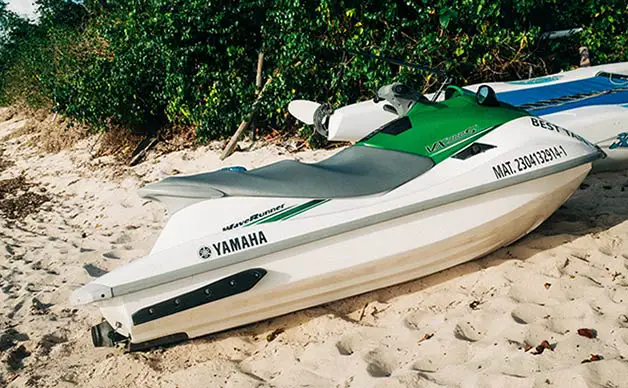Do you own a 2012-2019 Yamaha FX Waverunner? And do you have problems with the low fuel warning buzzer going off when you’ve still half a tank of fuel left?
Well, you aren’t the only one. It was a problem that drove a number of owners a bit crazy.
Yamaha finally established a fix in August of 2020, issuing a technical bulletin to its dealers addressing the issue – through the bulletin specifically earmarked just 2019 and 2020 models.
Contents
Official Reaction
So a fix does exist, it appears. It requires, however, a programming tool available only to certified Yamaha dealers.
A good dealership should do a “goodwill” reprogram, even if your boat is out of warranty. At worst, the labor charge should be quite small for simply plugging into a harness and pushing a few buttons.
Although the service bulletin addresses only a specific model range, it’s likely that any FX with a digital dash could be repaired with a flash.
Previously, Yamaha had replaced fuel sending units on certain models.
In the interim, however, some riders worked out their own fixes that can be worked out under the proverbial shade tree by do-it-yourselfers.
If you have access to an ohm meter and know how to use it, it might be worthwhile to check resistance at the sending unit. This is located on top of the fuel pump assembly. You’ll find it located underneath an access panel visible by opening the front storage compartment.
As you can see in the above illustration taken from a Yamaha service manual, checking the resistance with a topped-off fuel tank should show less resistance. The “upper” position refers to the signal sent by the float arm.
It’s also worth a shot to disconnect and reconnect the electrical connector to the pump, and then retest to see if the reading remains constant. (Spoilers, it probably will.) Inspect the actual pins. Make sure the pins are not bent, damaged, or pushed back inside the housing.
Finally, if you have the mechanical skill (doesn’t take much) you can also try disconnecting, cleaning, and securely reconnecting the ground wire and positive wire leading to the sending unit. Again, that’s probably not it – but that’s why we call it troubleshooting. Go through and eliminate possible causes while attempting to establish a solution.
A Home Cooked Remedy
Some owners resorted to removing the pump assembly and simply bending the fuel arm to reposition the float lower in the tank, as shown in the rough drawing shown below.
This is likely effective – but is equally effective at moving the problem around, not actually fixing it. With a little experimentation (or luck) you can move the float lower in the tank, which will allow more fuel to be consumed before the buzzer warning sounds.
(Note that this must be done in a manner that keeps the float itself level, and not tilted from its original position.)
It will also affect the accuracy of your fuel gauge across its entire range. For better or for worse.
You do know you can make the buzzer shut up just by thumbing the mode button, right?
But yeah, if you want to try the bendy method, you’ll need to remove the entire fuel pump assembly from the tank to gain access. There’s a somewhat more accurate depiction of the float arm in the drawing taken from a Yamaha service manual below.
Your Mileage May Vary
In the case of Yamaha’s FX series, generally speaking to the normally aspirated machines, Waverunners are going to burn up something like 13 gallons of gas every 60 miles of riding open waters at 50 mph. Supercharged engines of course will use more fuel than non-supercharged models.
But that’s very general. Your mileage can and will vary. Constant wide open throttle will noticeably increase that number, as will towing skiers or other heavy loads.
Common Problems, Common Solutions
This issue is somewhat but not entirely specific to Yamaha’s Waverunner FX models.
In truth, over the years, I’ve found that the accuracy of fuel gauges in many different brands of watercraft can be questionable. I also honestly really miss the days when manufacturers simply fitted a fuel petcock to their machines that included a reserve setting.
Buzzers? I don’t want any stinkin’ buzzers!
In actual practice, I always have a pretty good idea of how much fuel will be required for any day’s ride. I go old school, remove the seat, and look for myself to see how much gas is in the tank.
That works pretty well. Imagine that. See it to believe it!






